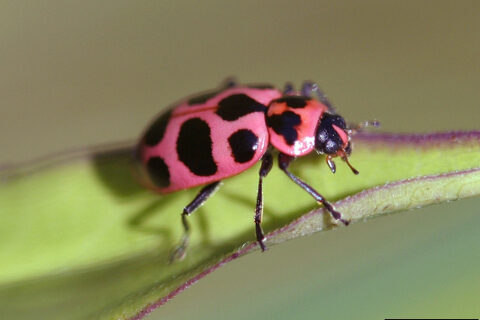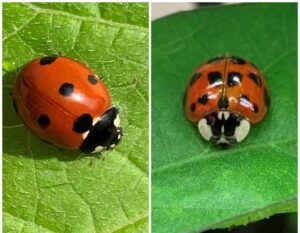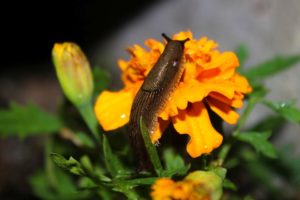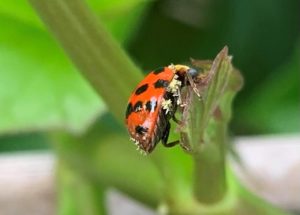Have you ever seen a beetle that resembles a ladybug, but it’s pink? Chances are, you have happened upon a pink ladybug. Also known as a pink lady beetle, the Coleomegilla maculate measures approximately ¼ inch (6 mm) long. Its body is more oblong, and its wing cover is less domed than the traditional red and black ladybug. It has twelve spots that give it yet another name, the twelve-spotted ladybug or beetle. It is native to North America and can range in color from red to pink.
Like the more traditional ladybug, the pink ladybug is considered a beneficial insect because it will devour aphids, mites, and insect eggs. What’s more, they will also dine on asparagus beetles, corn borers, corn earworms, Mexican bean beetles, and Colorado potato beetle eggs and larvae.
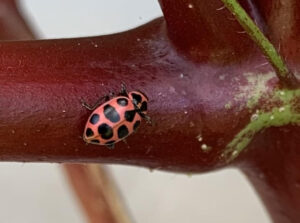
Unlike most traditional ladybugs, as much as fifty percent of the pink ladybugs’ diet consists of pollen from flowers such as the ubiquitous dandelion, as well as from cucumber flowers and squash flowers. (Contrary to what some may believe, the consumption of pollen does not hurt flowers or fruit production but actually increases pollination rates.) They will also eat nectar, and, like the more iconic red and black ladybugs, both adults and larvae have been known to eat other ladybugs, eggs, and larvae.
A Case of Mistaken Identity
Often, pink ladybeetles are confused with Asian beetles and spotted cucumber beetles. The former is a traditional ladybug look-alike save for its variance in color, which ranges from yellow to orange to red, and the noticeable “M” shaped mark behind its head. The Asian beetle is an invasive species that congregates in large numbers, invading homes and other structures during the winter months. While they do eat aphids, they can wreak havoc. Not only do they bite, but they also secrete a yellow substance that smells and stains walls, clothes, or anything else it touches. You can learn more about Asian beetles in this helpful article.
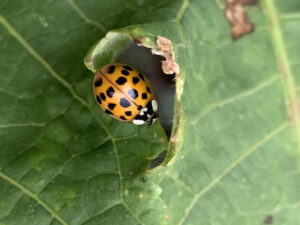
Pink ladybugs are also sometimes misidentified as a pink version of the spotted cucumber beetle, an insect that is harmful to gardens. While both feed on pollen, the cucumber beetle is not beneficial, especially to cucurbits like cucumbers, melons, squash, etc., because it eats leaves and stems and can also be a vector for bacterial wilt and can transmit powdery mildew.
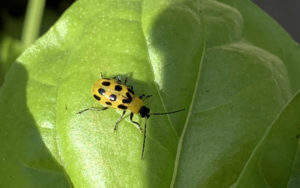
Pink Ladybug Life Cycle
A female beetle can lay anywhere from 200 to 1,000 eggs during a three month period. The yellow spindle-shaped eggs are laid upright in groups of eight to fifteen, usually near a food source. The larvae look very similar to that of the traditional ladybug larvae. Like their adult version, the larvae eat aphids, mites, and insect eggs. They molt four times before affixing themselves to a plant stem or leaf to pupate. Temperature determines how long it takes (anywhere from three to twelve days) for the adult beetle to emerge.

Adults congregate to overwinter in plant debris or other protected areas. Unlike Asian beetles, which also congregate, they do not bite or secrete staining substances that stink. When the adult beetles emerge in the spring, they will begin to look for a food source and places where they can lay eggs.
Now that you know all about the pink ladybug, be on the lookout for this amazing beneficial beetle in your garden!
Thank you for reading this article! If you found it interesting or helpful, please consider sharing it with others via email and social media!
